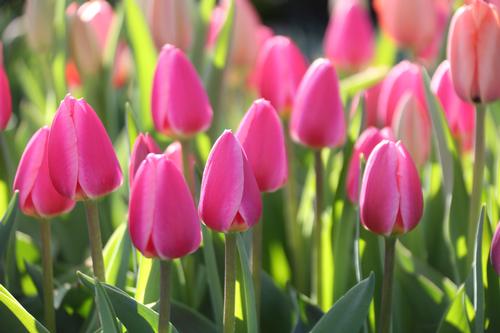
Cultural biases are the first challenge to overcome. Pink is a color that's often associated with sweets, babies, girls, cuteness, cotton candy and romance. When you're designing a garden or home landscape, cute is rarely the goal, so many of us write off pink flowers without giving them a second thought.
Yet pink is a color that can enhance almost every garden -- as long as you know what kind of pink you're dealing with.

As a pure color, pink does not contain yellow or blue. It’s simply a pale version of the primary color red. The band across the top in the image below, is pink in its pure color.
To alter this true pink hue, you can add white to get a “tint” or black to get a “shade”. Adding both black and white results in a “tone”. Tints, tones and shades are versions of the same hue. When they are used together, it's called a monochromatic color scheme.

The Difference Between Warm Pinks and Cool Pinks
When you change the temperature of a pure color, combinations begin to get trickier. This is especially true with pink. So when choosing plants for your garden, you need to be able to recognize the difference between a true pink, a warm pink and a cool pink.
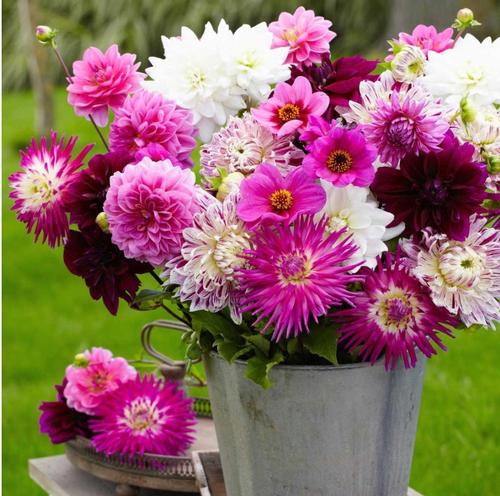
Warm pinks have names such as coral, peach, salmon and strawberry. If you were creating these colors with paint, you would be adding yellow to a true pink hue. Warm pinks tend to be calming and easy on the eye.
The names for cool pinks include bubblegum, carnation, fuchsia, orchid pink and hot pink. These colors are made by adding a little blue to true pink. Cool pinks are more energizing and a bit edgier than warm pinks.
Though not a hard and fast rule, your pink flower garden will be more successful if you stick with hues on one or the other side of the warm/cool spectrum.
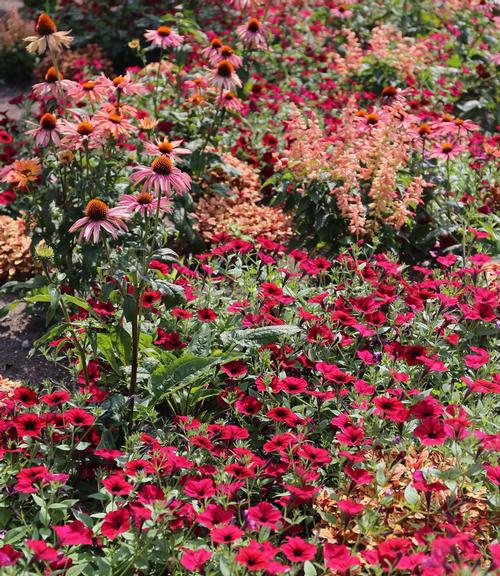
Designing With Warm Pinks
Most people would say red and pink don’t go together. But that’s not always the case. Warm pink echinacea (with its orange cones) actually works beautifully with warm red petunias and coral pink salvias. The key to success is keeping warm with warm. Had this garden included fuchsia petunias rather than dark red, the combination would not have been as pleasing.
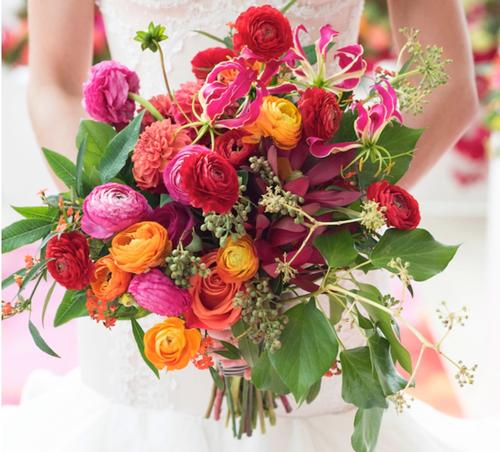
In this vibrant wedding bouquet, posted on Flirtyfleurs.com, you see how beautifully warm pinks can be combined with orange and even yellow.
Teal blue is warm pink’s complementary color (opposite on the color wheel), so plants with blue-green foliage such as lavender, juniper and eucalyptus always make good companions. Grey-blues such as lamb’s ears and dusty miller, and olive greens also look great with warm pinks.
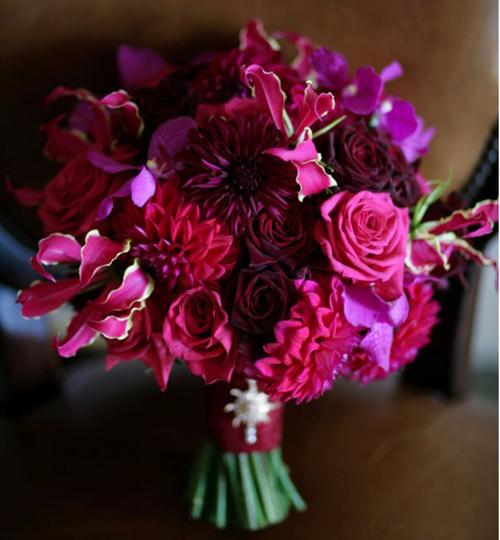
Designing With Cool Pinks
Pinks with a slightly blue cast are considered cool pinks. Flowers with a cool pink hue look beautiful paired with violet, burgundy and purple (as you see here in another wedding bouquet posted on Flirtyfleurs.com). All of these colors contain true red and varying amounts of blue. In color theory, they are called analogous colors, which means they are adjacent to each other on the color wheel. When choosing flowers for your garden, combining analogous colors ensures a pleasing color harmony.
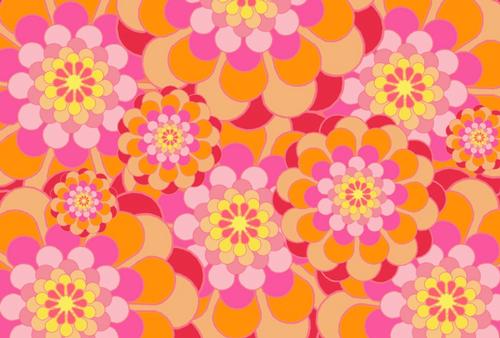
For a more vibrant look, consider combining cool pink with orange and/or yellow. Garden accessories that are turquoise blue or minty green look fabulous with cool pink. Same with navy blue. And don’t forget about incorporating lighter or deeper shades of true pink.
Cool pink’s complementary color is lime green, so be on the lookout for opportunities to incorporate yellow-green foliage. Grey foliage will take your garden in a very different direction, but it also looks good with cool pink.
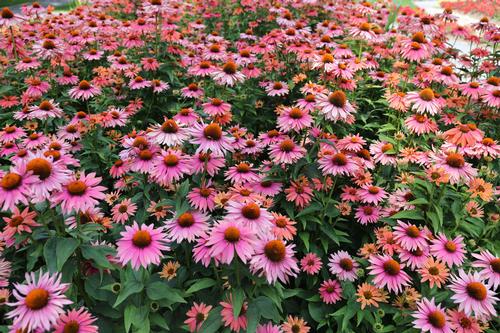
Pink Perennials for Your Garden
Anemone, astilbe, clematis, dianthus (pinks), dicentra (bleeding heart), dictamnus (gas plant), digitalis (foxgloves), echinacea (coneflower), eupatorium (Joe-Pye weed), geranium (cranesbill), hellebore, hemerocallis (daylily), hollyhocks, monarda (bee balm), papaver (Oriental poppy), peonies, persicaria, phlox, primula (primroses), pulsatilla (Pasque flower), Roses, Yarrow.
Pink Flower Bulbs for Your Garden
Canna, dahlias, gladiolus, hyacinths, lilies, nerine, eucomis, crinum, ranunculus, tulips.
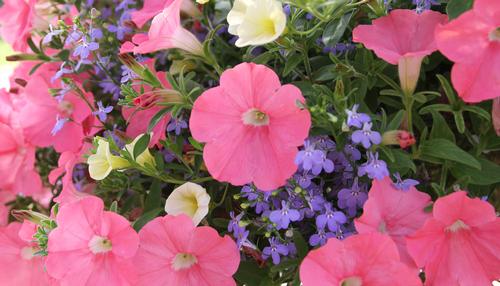
Pink Annual Flowers for Your Garden
Angelonia, asters, celosia, cleome, cosmos, hibiscus, impatiens, lavatera, petunias, poppies, zinnias
To learn more about using color in your garden, read Garden Color 101. If you'd like to shop all of our pink flower bulbs and perennials for spring planting, click HERE.
